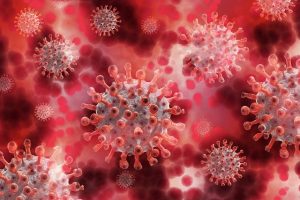The doctor explained about uterine fibroids
- Mifepristone: A Safe and Effective Abortion Option Amidst Controversy
- Asbestos Detected in Buildings Damaged in Ukraine: Analyzed by Japanese Company
- New Ocrevus Subcutaneous Injection Therapy Shows Promising Results in Multiple Sclerosis Treatmen
- Dutch Man Infected with COVID-19 for 613 Days Dies: Accumulating Over 50 Virus Mutations
- Engineered Soybeans with Pig Protein: A Promising Alternative or Pandora’s Dish?
- Severe Fever with Thrombocytopenia Syndrome (SFTS): A Tick-Borne Threat with High Mortality
The doctor explained about uterine fibroids
- Red Yeast Rice Scare Grips Japan: Over 114 Hospitalized and 5 Deaths
- Long COVID Brain Fog: Blood-Brain Barrier Damage and Persistent Inflammation
- FDA has mandated a top-level black box warning for all marketed CAR-T therapies
- Can people with high blood pressure eat peanuts?
- What is the difference between dopamine and dobutamine?
- What is the difference between Atorvastatin and Rosuvastatin?
- How long can the patient live after heart stent surgery?
The doctor explained about uterine fibroids.
Uterine fibroids are benign tumors formed by the proliferation of uterine smooth muscle tissue, which are generally common in women between 30 and 50 years old.

Data show that, on average, 1 out of every 4 women of childbearing age suffers from uterine fibroids. What is the disease with such a high incidence and how to treat it?
1. What is uterine fibroids?
Uterine fibroids are benign tumors formed by the proliferation of uterine smooth muscle tissue, which are generally common in women between 30 and 50 years old.
According to the relationship between fibroids and the uterine muscle wall, they can be divided into three categories: intramural fibroids, subserosal fibroids and submucosal fibroids.
Among them, the most common incidence of intramural fibroids is about 60% to 70%. The probability of malignant transformation of uterine fibroids is very small, only 0.4-0.8%.
2. What is the cause of uterine fibroids?
The exact cause of uterine fibroids is not yet clear, and may be related to genetic factors and hormone levels.
Women with a family history of uterine fibroids have a higher incidence of uterine fibroids. Excessive estrogen levels can also stimulate the growth of uterine fibroids.
3. What are the symptoms of uterine fibroids?
Some patients with uterine fibroids have no obvious symptoms. Among symptomatic patients, the symptoms are common in the following categories:
①Impact on menstruation:
patients with uterine fibroids have increased menstrual volume, shortened menstrual cycles and longer menstrual periods. In addition, long-term increased menstrual flow can cause anemia, fatigue, heart palpitations and other symptoms.
② Increased leucorrhea:
the increase of the endometrial area and pelvic congestion, resulting in increased secretion of leucorrhea.
③Compression symptoms:
the uterus is adjacent to the bladder, ureter, and rectum. If uterine fibroids compress the bladder or ureter, it can cause frequent urination, urgency, difficulty urinating, and urine retention. If uterine fibroids compress the rectum, symptoms such as painful defecation and constipation may occur.
④ Pain and mass in the lower abdomen:
When the fibroids gradually increase and the uterus exceeds the pelvic cavity, the mass can be touched from the abdomen. Sometimes it can cause acute lower abdominal pain.
⑤Impact on pregnancy: If uterine fibroids grow in the cervix and block the birth canal, it may cause obstruction of the birth canal, and dystocia requires cesarean section; it can lead to increased risk of miscarriage, premature delivery, and postpartum hemorrhage; Competing for nutrients; fibroids that protrude into the uterine cavity can hinder the implantation of the fertilized egg and affect fertility.
4. How is uterine fibroids diagnosed? Under what circumstances do you need surgery?
The diagnosis methods of uterine fibroids often include the following:
① Ultrasound examination is the most important method for diagnosing uterine fibroids. Ultrasound diagnosis has high sensitivity and specificity, and it can also distinguish uterine fibroids from other pelvic tumors.
②Hysteroscope/hysteroscope Use the probe to enter the uterine cavity through the vagina, and look directly at the uterine cavity to see if there is no submucosal fibroids. If necessary, relevant treatments can be performed.
③Magnetic resonance examination is suitable for fine examination, and can accurately know the size, number and location of fibroids.
In addition, there are methods such as laparoscopy and diagnostic curettage.
Intense treatment of the uterus can be divided into three categories:
Patients with asymptomatic uterine fibroids generally do not need treatment, but the condition of fibroids needs to be checked regularly.
The second method of treatment is medication. For patients who have already experienced symptoms, such as menorrhagia and anemia, but are unwilling to undergo surgery, or are pregnant, medication can be considered. Drug treatment is mainly aimed at two aspects:
① Drugs for estrogen: including GnRH-a, mifepristone, etc.
② Drugs for menorrhagia.
The last method is surgical treatment. Surgery should be considered in the following situations:
1. There is the possibility of malignant change;
2. Menorrhagia and anemia are ineffective after medication;
3. Causes discomfort such as frequent urination, urinary retention, constipation, lower abdominal pain, etc., affecting normal life;
4. There is a need for pregnancy but the fibroids are too large in diameter.
There are many surgical treatment methods for uterine fibroids, which can be combined with the needs of the patient to consider the appropriate surgical method.
1) Myomectomy and hysterectomy: the former is suitable for patients who wish to preserve fertility, and the latter is suitable for patients who do not have the need for fertility.
2) High-energy focused ultrasound, the so-called Haifu knife. It is suitable for patients who wish to preserve the uterus, but there is a risk of residual fibroids and recurrence.
5. What can be done to prevent uterine fibroids?
(1) Try not to consume large amounts of beef and other red meat or ham. Studies have shown that these foods may increase the risk of uterine fibroids.
(2) Avoid long-term exposure to estrogen, progesterone drugs or health care products, because the occurrence of uterine fibroids is closely related to hormone levels.
(3) Soy products can be ingested normally. Although soybeans contain estrogen analogs, when the level of estrogen in the body is high, the combination of soybean isoflavones and estrogen receptors limits the human estrogen and estrogen to a certain extent. The normal binding of hormone receptors reduces the effect of estrogen in the body as a whole.
(4) The most important thing is to develop a good habit of regular physical examinations.
The doctor explained about uterine fibroids
(source:internet, reference only)
Disclaimer of medicaltrend.org
Important Note: The information provided is for informational purposes only and should not be considered as medical advice.



